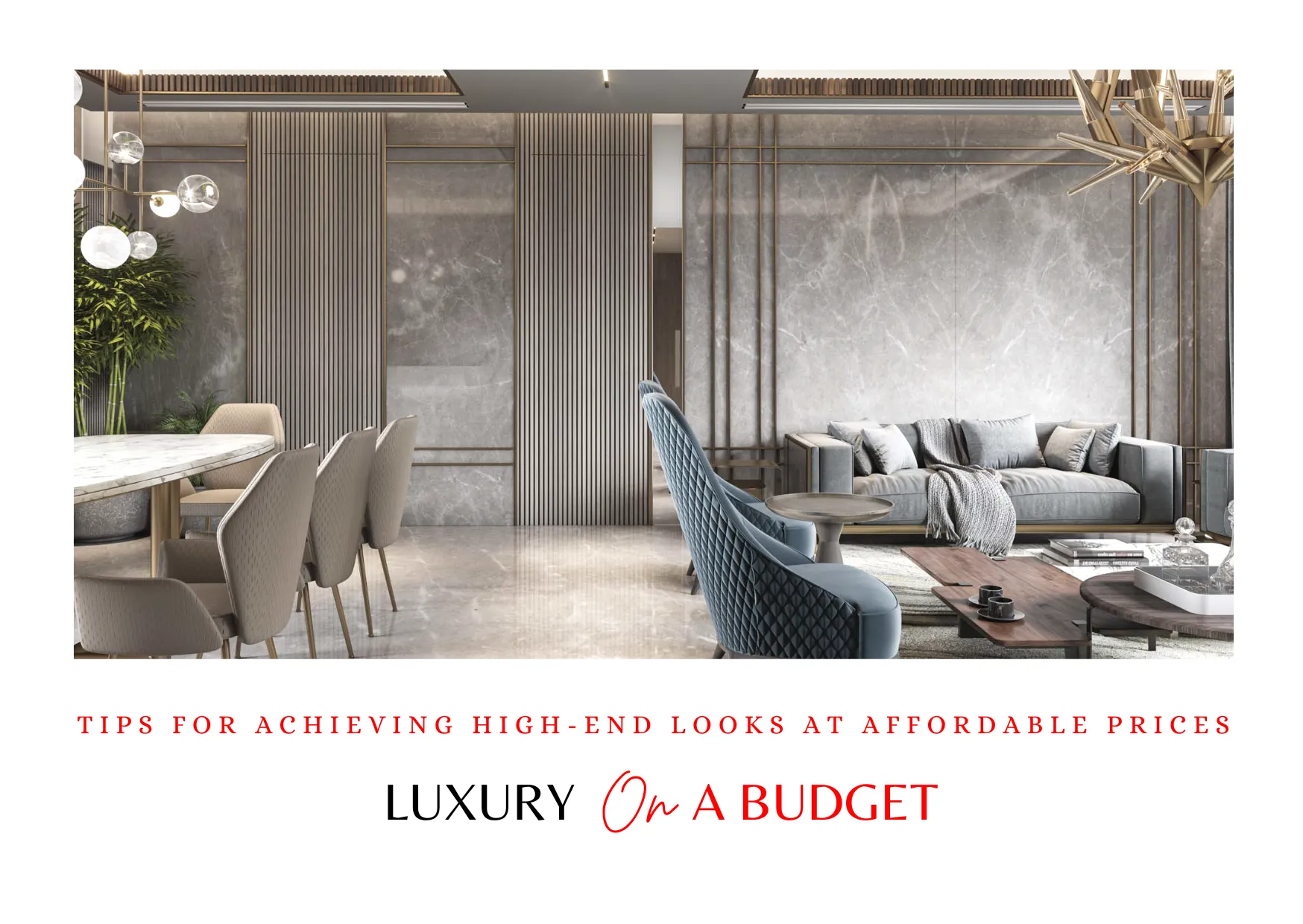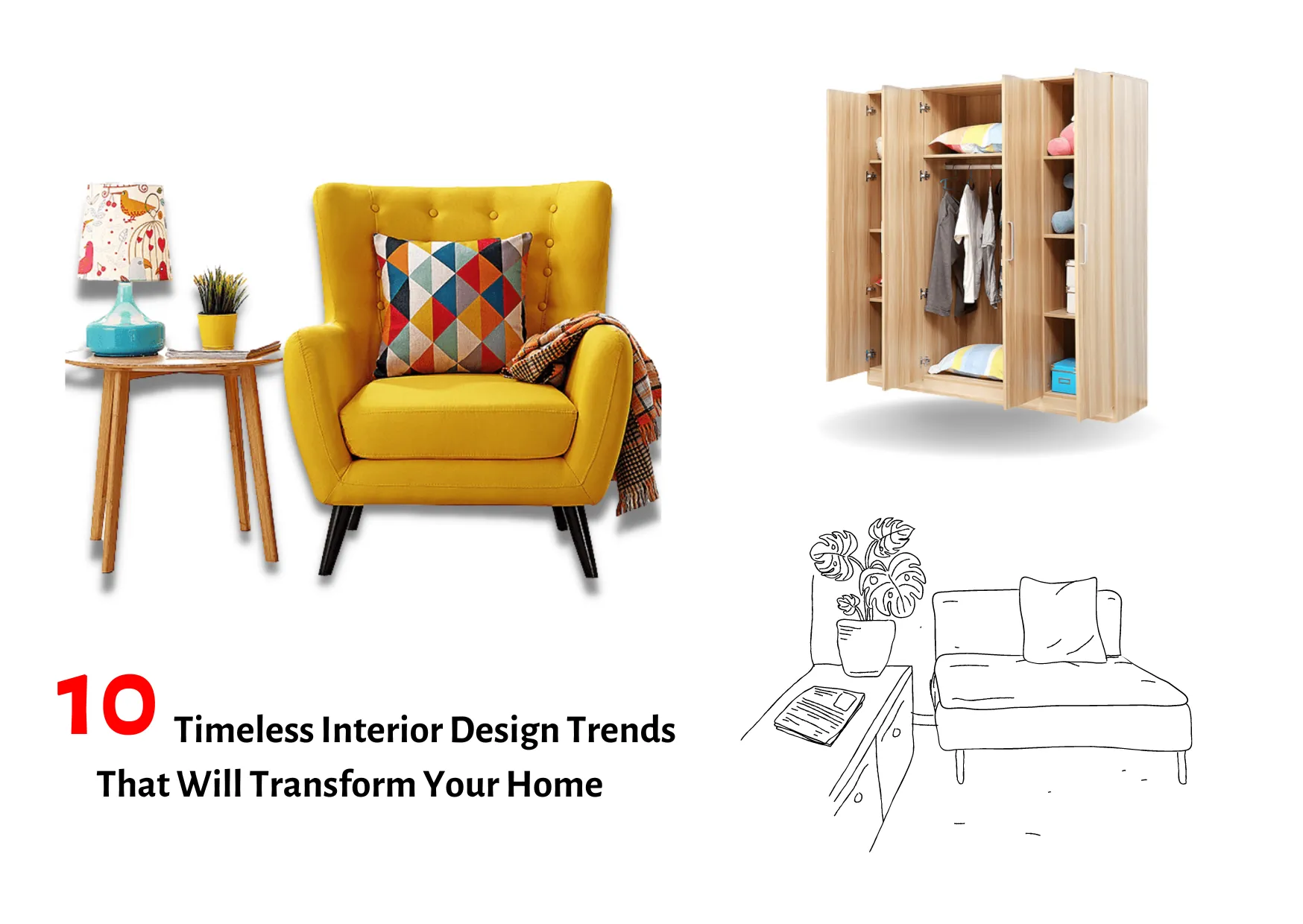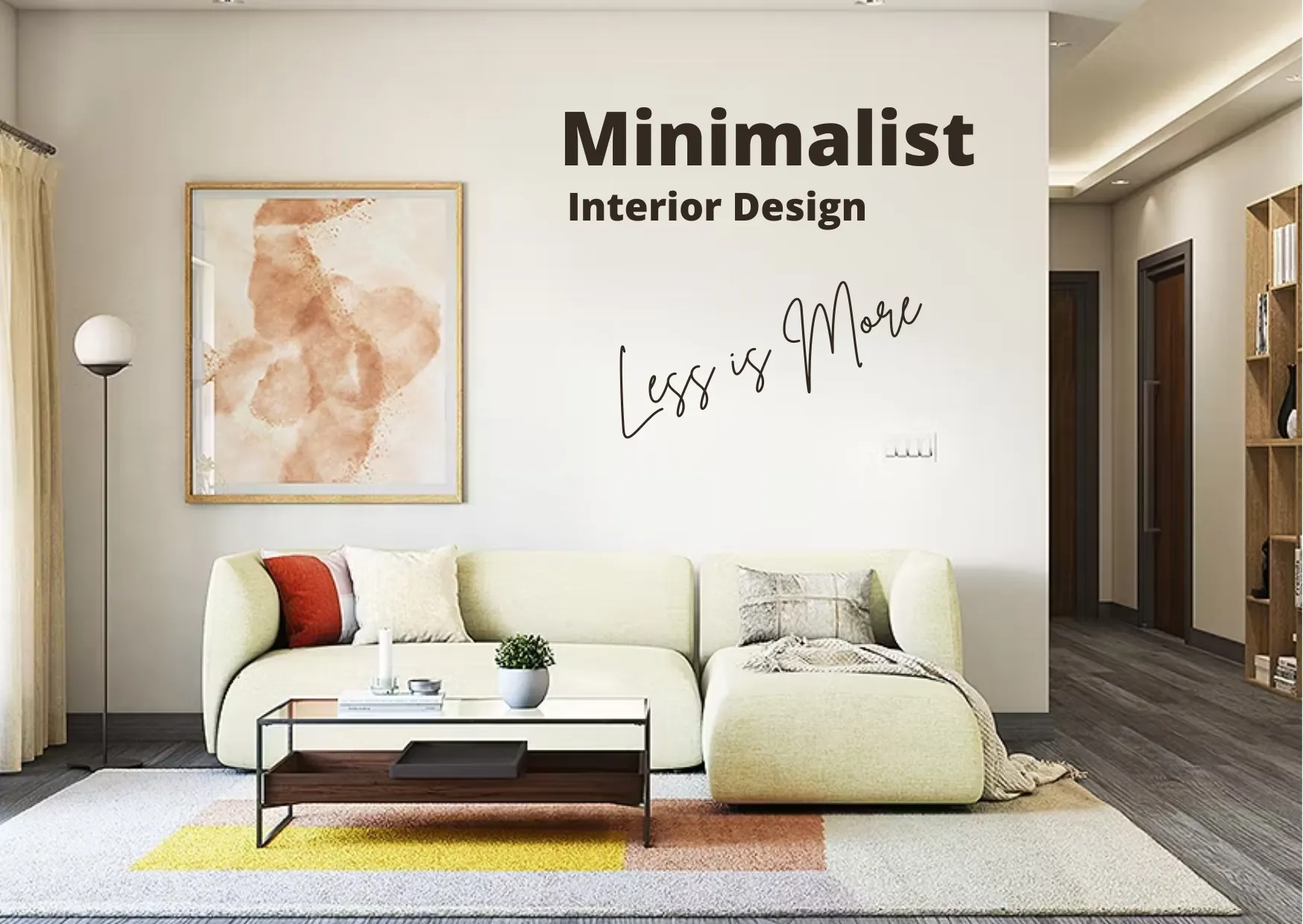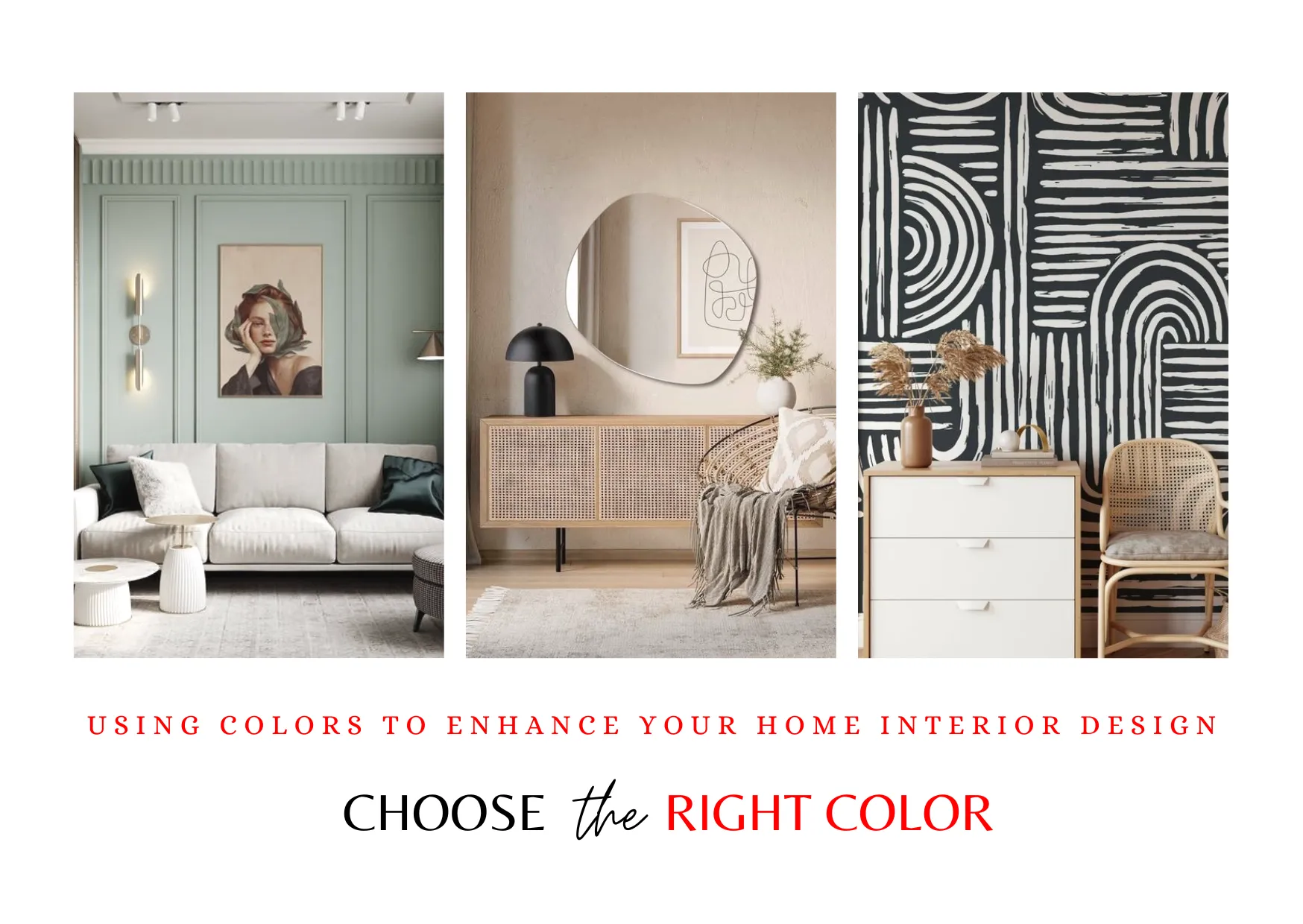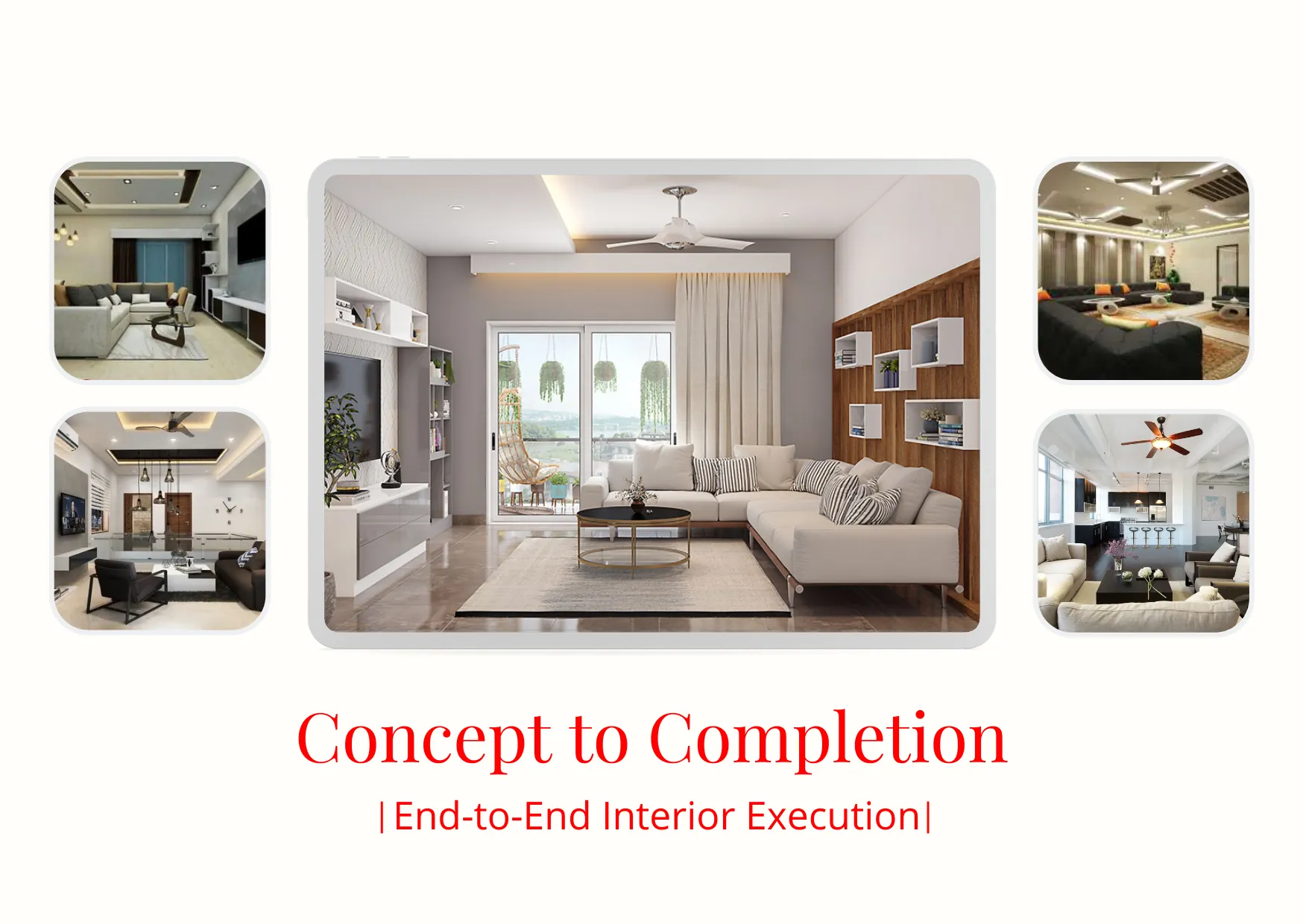E-53 Ground Floor, Sector-63, Noida
We will contact you soon with a responce.
We will contact you soon with a responce.
We will contact you soon with a responce.
Who doesn't love the idea of indulging in luxurious styles and creating an elegant living space? However, the price tags associated with high-end aesthetics can often feel like a barrier. The good news is that achieving a luxurious look doesn't necessarily require breaking the bank. With a little creativity, resourcefulness, and smart shopping, you can transform your space and personal style into a sophisticated and upscale haven without compromising your budget. In this blog, we will explore some valuable tips to help you attain a high-end look interior on a budget.
1. Plan and prioritize:
Before diving into a design project or revamping your wardrobe, start by creating a plan. Assess your space or personal style and identify the key elements you want to focus on. By establishing your priorities, you can allocate your budget effectively and avoid unnecessary expenses. Whether it's a statement piece of furniture or a timeless fashion accessory, understanding your preferences will guide you toward making smarter choices.
2. Opt for timeless pieces:
Investing in timeless pieces is a smart strategy for achieving a high-end look on a budget. Classic designs and styles tend to transcend trends, making them valuable additions to any space or wardrobe. Look for furniture with clean lines, neutral colors, and durable materials. Similarly, when building a wardrobe, choose versatile, well-made clothing items that can be mixed and matched effortlessly. These timeless pieces will exude elegance and sophistication without the need for constant updates.
3. Embrace thrift shopping and secondhand finds:
Thrift shopping and exploring secondhand markets can be a treasure trove for discovering high-quality items at budget-friendly prices. Many upscale neighborhoods have consignment shops where you can find pre-loved designer pieces at a fraction of their original cost. Keep an open mind and take your time to search through these stores. You never know what hidden gems you might stumble upon, such as unique furniture, vintage accessories, or designer garments.
4. DIY and upcycling:
Unleash your creativity and embrace do-it-yourself (DIY) projects to add a touch of luxury to your space or wardrobe. With the abundance of online tutorials and inspiration, you can transform basic items into stylish and personalized pieces. For example, repainting old furniture or reupholstering a thrifted chair with an elegant fabric can instantly elevate its appearance. Similarly, refreshing a plain shirt with unique buttons or adding embellishments to a simple dress can give it a high-end flair.
5. Pay attention to details:
The little details can make a significant impact when it comes to achieving a luxurious look. In interior design, consider adding crown molding, installing elegant light fixtures, or incorporating decorative accents like mirrors or artwork. These small touches can elevate the overall ambiance and create a high-end feel. Similarly, in fashion, pay attention to accessories such as jewelry, scarves, or belts, as they can effortlessly enhance an outfit and give it a sophisticated touch.
6. Use lighting strategically:
Proper lighting can instantly transform a space and create an aura of luxury. To achieve the desired effect, play around with various lighting options. Consider using soft, warm-toned bulbs to create a cozy atmosphere, or install dimmer switches to control the intensity of the lighting. Additionally, strategically placed lamps or statement chandeliers can become focal points and add a sense of grandeur to any room.
Achieving a luxurious look on a budget is not always easy, but with the right knowledge and tools, it is definitely possible. This article explored various tips and techniques for achieving a high-end look without breaking the bank. By shopping smart, being creative with design, and investing in high-quality statement pieces, anyone can create a luxurious space on a budget. Put these tips into practice and achieve the sophisticated and stylish look you desire, without overspending.
Interior design is an art that is constantly evolving. What was trendy yesterday may not be in vogue today – creating confusion for homeowners who want to keep their homes fashionable at all times. However, there are certain interior design trends that never go out of style and continue to be popular year after year. Knowing what these timeless design features are can help you create a beautiful, classic, and functional home that will stand the test of time. Whether you are a new homeowner or a seasoned pro, check out these timeless interior design trends that will transform your home.
1. Minimalism: Clean lines, uncluttered spaces, and a focus on functionality are the hallmarks of minimalist design. Opt for neutral color palettes, sleek furniture, and open layouts to create a calm and serene environment. (Explore Minimalist Designs)
2. Natural Materials: Incorporating natural materials such as wood, stone, and rattan into your home brings warmth and texture. Use hardwood floors, reclaimed wood furniture, and stone countertops to add a timeless appeal.
3. Sustainable Design: With an increasing focus on sustainability, eco-friendly design elements have become a timeless trend. Incorporate energy-efficient appliances, recycled materials, and indoor plants to create a healthier and more sustainable living space.
4. Vintage and Mid-Century Modern: Incorporating vintage or mid-century modern furniture and accessories can instantly add character and style to your home. Look for iconic pieces like Eames chairs, retro lighting fixtures, and vintage artwork to create a sense of nostalgia.
5. Statement Lighting: Eye-catching lighting fixtures serve as both functional and decorative elements. Choose chandeliers, pendant lights, or sculptural lamps to make a bold statement and add visual interest to any room.
6. Open Floor Plans: Open floor plans have become increasingly popular and timeless, as they create a sense of flow and connectivity between different areas of the home. Knocking down walls to create open spaces can make your home feel more spacious and inviting.
7. Neutral Color Palettes: Neutral color schemes, such as shades of white, beige, and gray, have stood the test of time. These colors create a timeless backdrop that allows you to incorporate different styles and accents throughout the years.
8. Mix of Old and New: Combining modern elements with vintage or antique pieces adds depth and character to your home. Pair a contemporary sofa with a vintage coffee table or display a collection of antique books alongside minimalist shelving to create a unique and timeless look.
9. Biophilic Design: Biophilic design focuses on connecting humans with nature. Incorporate natural elements like large windows, indoor plants, and natural textures to create a soothing and refreshing environment that brings the outdoors inside.
10. Customization and Personalization: Creating a home that reflects your personality and interests never goes out of style. Incorporate personalized elements such as artwork, family photos, and unique accessories to make your home truly yours.
interior design trends in your home can add a touch of elegance and sophistication that will last for years to come. From earthy tones to multipurpose spaces, these design trends offer versatility and functionality without sacrificing style. At Interior Design Trends, we specialize in bringing these trends to life and transforming homes. Contact us for more information on how we can help elevate your home's interior design.
Minimalist interior design is a popular trend in modern home decor. This design style focuses on the idea that less is more – with clean lines, neutral colors, and a clutter-free environment. It is an aesthetic that works well in residential and commercial spaces alike, with benefits that go beyond just aesthetics.
Exploring minimalist interior design allows designers and homeowners to create an environment that is free from distractions and allows the mind to focus on what really matters. In this article, we'll delve deeper into the concept of minimalist interior design and explore the reasons why this trend has gained so much popularity.
Simplicity in Design:
A minimalist interior design is all about simplicity. The design philosophy embraces the notion that less is more, permitting the embodiment of every component to radiate through without superfluous embellishments. Clean lines, impartial variety ranges, and cleaned-up spaces are signs of a minimalist interior. In the absence of visual distractions, this method creates a calm atmosphere that allows the mind to relax and find peace.
Cleaning up and Arranging:
Decluttering and organizing are important aspects of minimalist interior design. You can create a space that feels open and inviting by removing anything that isn't absolutely necessary and keeping only the things that are absolutely necessary. You are encouraged to carefully consider each object and its function in your living space with minimalism. In addition to reducing visual clutter, adopting a more deliberate approach to the things you surround yourself with fosters a sense of mindfulness and intentionality.
Useful Concentration:
Functionality is highly valued in minimalism. In a minimalist space, each item and piece of furniture is carefully chosen to enhance form and function. Multifunctional features and clean silhouettes characterize contemporary furniture designs that maximize space utilization. The objective is to create a setting that not only supports the practical requirements of everyday life but also looks good.
The palette of colors and texture:
A common feature of minimalist design is the use of neutral color schemes. The color scheme is dominated by white, gray, and earth tones, creating a serene and calming background. Instead of being distracted by bold or vibrant colors, these muted hues allow the space's form and function to remain in focus. Additionally, texture plays a crucial role in minimalist design. By consolidating various surfaces like smooth wood, delicate materials, or harsh cement, you can add profundity and visual interest to the space while keeping a minimalist stylish.
Making the Most of Natural Light:
Natural light is embraced by minimalist design as a crucial component in creating a bright and airy atmosphere. In minimalist interiors, large windows, sheer curtains, and strategically placed mirrors are common features that let in a lot of light. By making the most of natural light, a room feels more open and connects it to the outside, blurring the lines between indoor and outdoor living.
Embracing Negative Space:
The appreciation of empty space is one of the fundamental principles of minimalist interior design. The term "negative space" refers to areas of a room that are empty or unoccupied. You can achieve harmony and balance by deliberately ignoring some areas. Not only does this design approach add to the overall appeal, but it also lets the mind breathe, encouraging a sense of peace and mindfulness.
Conclusion:
Because it provides a respite from the chaos of modern life, minimalist interior design has won the hearts of many. A minimalist space can become a haven of calm and clarity by embracing simplicity, decluttering, and emphasizing functionality. From the perfect lines and unbiased variety ranges to the accentuation of regular light and negative space, each component in a minimalist interior is cautiously organized to establish a climate that permits both the psyche and body to flourish. Therefore, get in touch with us right away if you want to turn your living space into a haven of simplicity.
When it comes to creating a visually appealing and harmonious home interior, colors play a crucial role. The right color palette can transform a dull space into a vibrant and inviting haven. Whether you're looking to add a pop of color or create a serene ambiance, understanding the psychology of colors and their impact on our emotions can help you design a house that truly reflects your personality and style. In this blog post, we will explore the power of colors and provide some tips on how to effectively use them to enhance your home interior design.
Understanding the Psychology of Colors:
Colors have the ability to evoke specific emotions and set the mood in a room. Before diving into color selection, it's essential to understand the psychology behind different hues. Here are a few commonly used colors and the emotions they typically evoke:
Blue: Associated with tranquility and serenity, blue can create a calming atmosphere in bedrooms or living spaces.
Red: A bold and energetic color, red can stimulate conversation and increase appetite, making it a suitable choice for dining areas.
Yellow: Symbolizing happiness and energy, yellow can add vibrancy to spaces like kitchens and home offices.
Green: A symbol of nature and renewal, green brings a sense of balance and relaxation to any room.
Neutral tones (e.g., beige, gray): Neutrals create a versatile and timeless backdrop, allowing you to play with accents and accessories.
Selecting a Color Scheme:
Once you have an understanding of color psychology, it's time to choose a color scheme for your home. Consider the following factors:
Personal preferences: Select colors that resonate with your personal taste and style. it is your home, it ought to reflect your personality.
Room purpose: Different rooms have different purposes, so choose colors that align with the intended function of each space.
Lighting: Keep in mind that natural and artificial lighting can influence how colors appear. Test colors in different lighting conditions before finalizing your choices.
Creating Balance and Harmony:
Using colors effectively means striking a balance and achieving harmony within your home. Here are a few tips to help you create a cohesive color scheme:
Choose a dominant color: Start by selecting a dominant color for the room, which will set the overall tone. This color can be used for larger surfaces like walls or furniture.
Use complementary colors: Complementary colors are opposite each other on the color wheel (e.g., blue and orange, red and green). These combinations can create a visually striking effect when used in moderation.
Play with shades and tones: Incorporating different shades and tones of the same color can add depth and dimension to your design.
Consider color flow: Ensure a smooth transition between rooms by using colors that complement each other or by gradually transitioning from one color to another.
Accentuating with Color: Colors can be used strategically to draw attention to specific areas or elements in your home. Here are a few ways to accentuate with color:
Statement walls: Create a focal point in a room by painting one wall in a bold or contrasting color. This technique adds visual interest and can define the purpose of the space.
Colorful furniture and accessories: Add pops of color through furniture pieces, cushions, curtains, or artwork. These accents can be easily changed over time to refresh the look of a room.
Plants and natural elements: Incorporating plants and natural materials not only adds a touch of greenery but also introduces various shades of natural colors, creating a harmonious connection with the surroundings.
Conclusion:
Colors have the remarkable ability to transform a space and influence our emotions. By understanding the psychology behind different hues and considering factors such as room purpose, personal preferences, and lighting conditions, you can create a home
How Can IDW Help You?
If you want to choose a color for your home but are confused about which is best for the walls of your home, then leave it to the expert designers at IDW. Today, schedule a consultation to receive high-quality and secure interiors.
Introduction:
Creating the perfect interior space is a blend of creativity, functionality, and meticulous execution. From envisioning the design concept to its actual realization, the journey can be both exciting and challenging. An end-to-end interior execution process ensures that your vision is transformed into a tangible reality, surpassing your expectations. In this blog, we will explore the various stages involved in this process and how they contribute to bringing your dream interior to life.
Conceptualization:
The first step in any interior execution is conceptualization. This stage involves understanding your requirements, preferences, and the intended purpose of the space. It is crucial to communicate your vision clearly to the design team, allowing them to develop a comprehensive understanding of your expectations. During this phase, ideas are brainstormed, sketches are created, and mood boards are developed to establish the foundation for the project.
Design Development:
Once the concept is finalized, the design development phase begins. Skilled interior designers and architects work closely to refine the initial concept into a detailed design plan. This includes material selections, color schemes, and lighting arrangements. Advanced software tools and 3D visualization techniques may be employed to provide a realistic preview of the proposed design, helping you make informed decisions and visualize the end result.
Material Selection and Procurement:
With the design plan in place, the next step is to select the appropriate materials, furnishings, fixtures, and finishes. This stage involves collaborating with suppliers, manufacturers, and vendors to source high-quality materials that align with the design vision. Factors such as durability, aesthetics, and sustainability are carefully considered during the selection process to ensure the desired outcome.
Construction and Execution:
Once the materials are procured, the construction and execution phase commences. Skilled craftsmen, contractors, and project managers work together to transform the design plan into a physical reality. This stage involves various activities, including demolition, structural modifications, electrical and plumbing work, installation of fixtures and furnishings, and painting or wallpapering. Clear communication and regular site visits ensure that the project stays on track and any issues are addressed promptly.
Quality Control and Project Management:
Throughout the execution process, quality control and project management play vital roles. Regular inspections are conducted to ensure that the construction adheres to the approved design and meets the required standards. Project managers oversee timelines, budgets, and coordination among different trades to ensure a smooth workflow. Any deviations or challenges are identified and resolved promptly to maintain the integrity of the design and prevent delays.
Finishing Touches:
The final stage involves adding the finishing touches that bring the interior to life. This includes the installation of artwork, accessories, textiles, and decorative elements that enhance the aesthetics and functionality of the space. Attention to detail is crucial at this stage to create a cohesive and visually stunning environment that aligns with the initial concept.
Click Here to know why you choose us.
Conclusion:
Embarking on an end-to-end interior execution journey requires a blend of creativity, expertise, and effective project management. From conceptualization to the finishing touches, every stage plays a vital role in bringing your vision to life. By collaborating with skilled professionals who understand your needs and translate them into a tangible reality, you can transform any space into a reflection of your personal style and preferences. The end result will be an interior that not only meets your expectations but exceeds them, creating an environment that is functional, aesthetically pleasing, and truly unique to you.
Hopefully, We Provide you with all information about End-To-End Interior Execution Process. If you want to know more about our services, visit our website or directly contact us.
E-53 Ground Floor, Sector-63, Noida
Turnkey Projects +91 99901 55566
Online Designing +91 9999423006
CAREERS
care@interiordesignwala.com
We will contact you soon with a responce.

